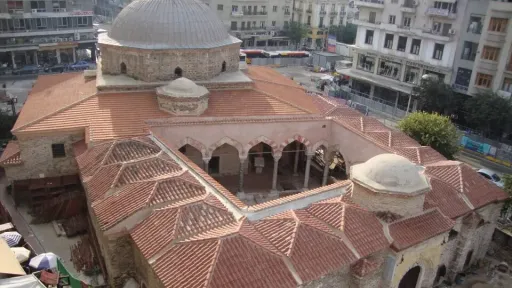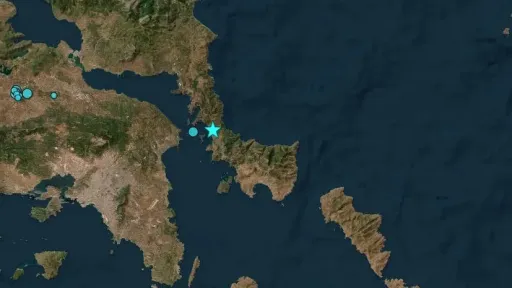Restoration of Hamza Bey Mosque in Thessaloniki expected to be completed in 2026

The restoration of the historic Hamza Bey Mosque in Thessaloniki, commonly known as Alkazar, is expected to be completed early next year, according to Greek Minister of Culture Lina Mendoni.
During her inspection of the restoration work, Mendoni stated that the project is progressing well and that the monument will be returned to the city upon completion.
According to a report by Kathimerini, the restoration is financed by €11 million from the Recovery and Resilience Fund. The project is being carried out by the Ministry of Culture’s Directorate of Restoration of Byzantine and Post-Byzantine Monuments in collaboration with the Thessaloniki Antiquities Authority.
The Hamza Bey Mosque, the oldest Ottoman mosque in Thessaloniki, has undergone significant wear, alterations, and interventions over the centuries, making the restoration process particularly complex and challenging.
"In the past six years, we have implemented projects and initiatives in Thessaloniki worth over €100 million from EU and national funds. This reflects our commitment to preserving the city's rich heritage," Mendoni stated.
The mosque, located at the intersection of Egnatia and Venizelou streets, was built in 1467 by Hafsa Hatun, the daughter of Ottoman military commander Hamza Bey.
For decades, the courtyard of this historic Ottoman structure was used as the Alkazar cinema. The mosque was officially registered as a historical and archaeological monument in 1926.
Historical Significance of Hamza Bey Mosque
According to the Turkish Religious Foundation’s Islamic Encyclopedia, the Hamza Bey Mosque was built along what was formerly known as Hamidiye Boulevard, now Egnatia Street, running through the heart of Thessaloniki. An inscription inside the mosque reveals that Hafsa Hatun, the daughter of Hamza Bey, commissioned the mosque in 1467-68.
There is some historical debate about Hamza Bey's identity. Some scholars suggest that he was the Ottoman official sent as an envoy to Vlad the Impaler (Kazıklı Voyvoda) and was executed by impalement in 1462. If this is the case, the mosque may have been built by his daughter in his memory.
Over the centuries, the mosque underwent multiple expansions and restorations. Historical accounts indicate that by the early 17th century, it had fallen into disrepair. A restoration project led by a high-ranking Ottoman official, Kapıcıbaşı Mehmed Bey, was completed in 1620, as recorded in a surviving Ottoman document.
During the Ottoman period, the mosque was centrally located in Thessaloniki’s bustling commercial district. However, after the city came under Greek control following the Balkan Wars, the mosque was abandoned. Its minaret was demolished, and its courtyard was converted into commercial spaces, while the prayer hall was repurposed as a cinema.
In 1978, a major earthquake caused further damage to the structure, leaving parts of it in a state of disrepair. Currently, sections of the mosque are used as retail spaces, while restoration efforts aim to preserve and restore its original architectural features.
The Hamza Bey Mosque’s architecture reflects a blend of Ottoman and Byzantine influences. Its prayer hall follows a square-plan design, covered by a dome supported by squinches. The entrance features a colonnaded porch with a central domed section flanked by barrel-vaulted wings.
Following its restoration, the Hamza Bey Mosque is expected to regain its historical significance as one of Thessaloniki’s key Ottoman-era monuments.







